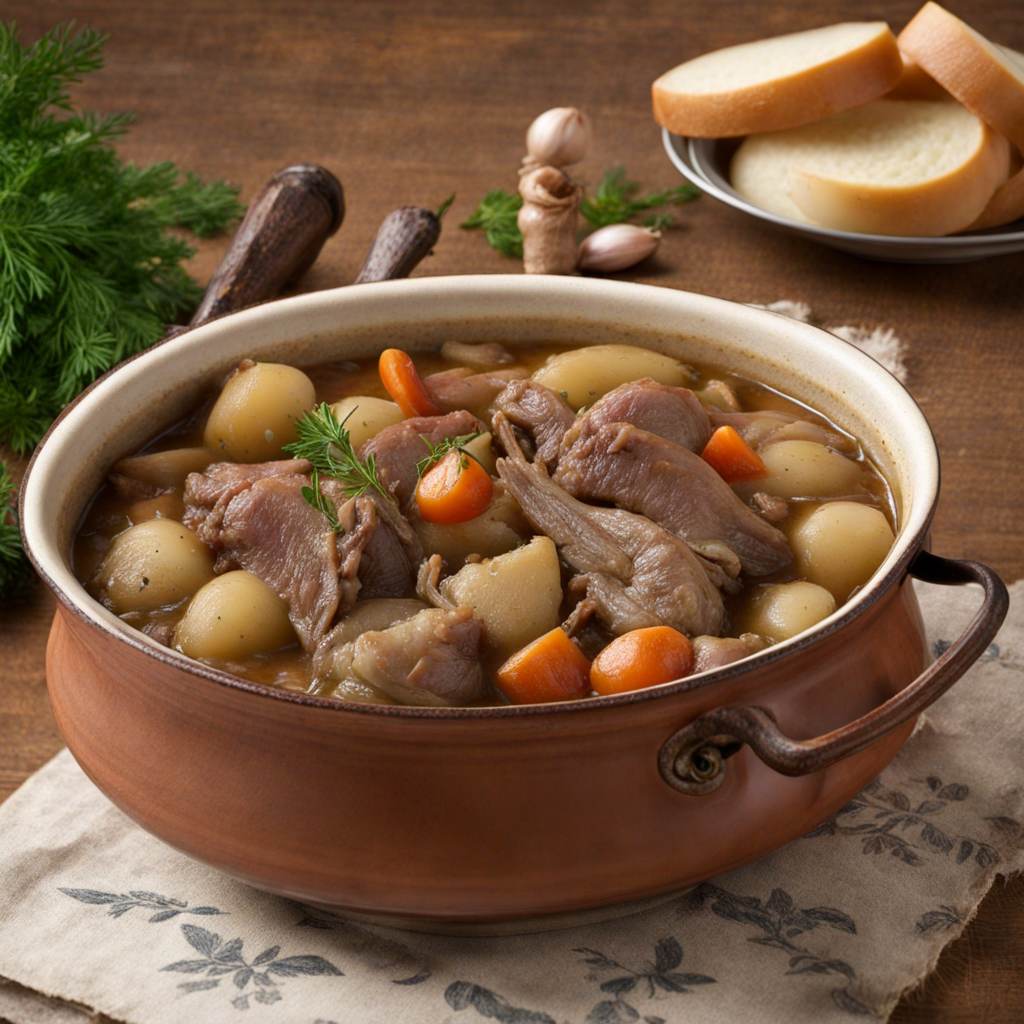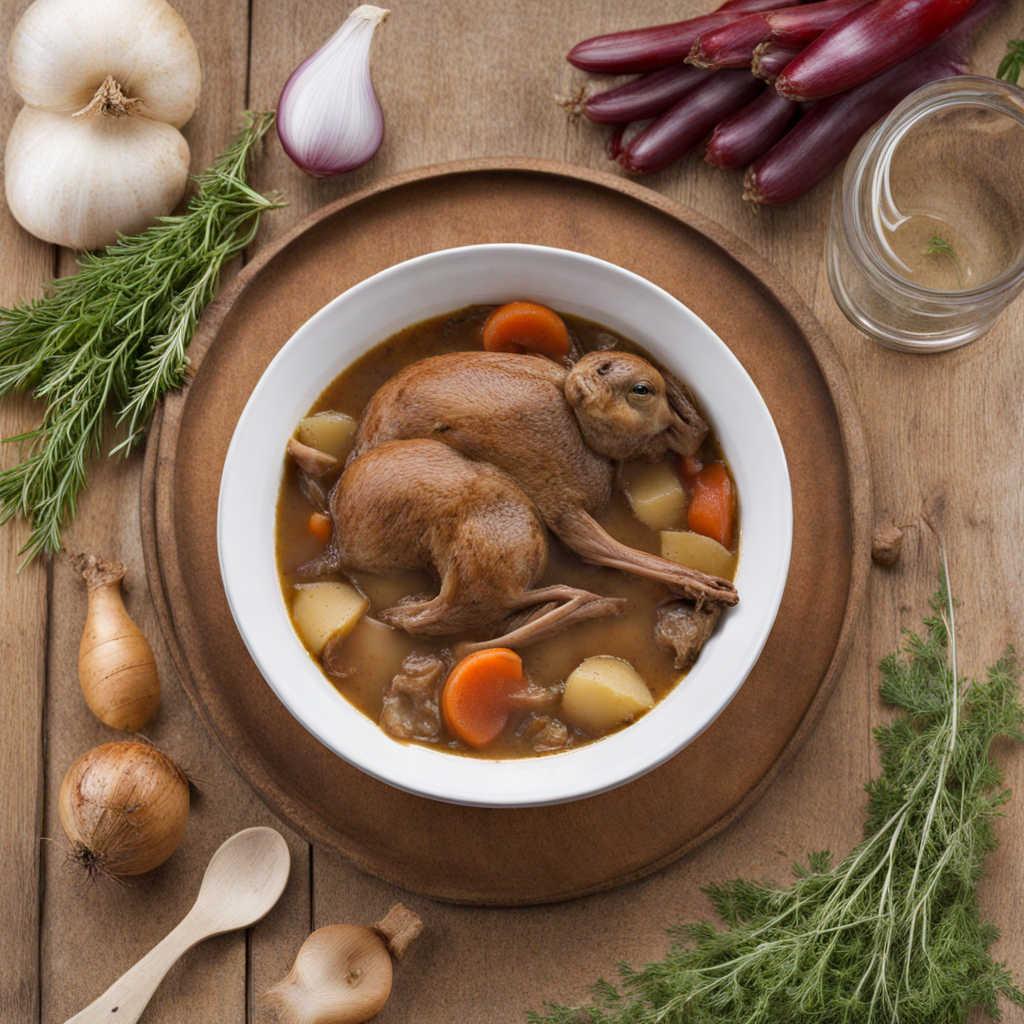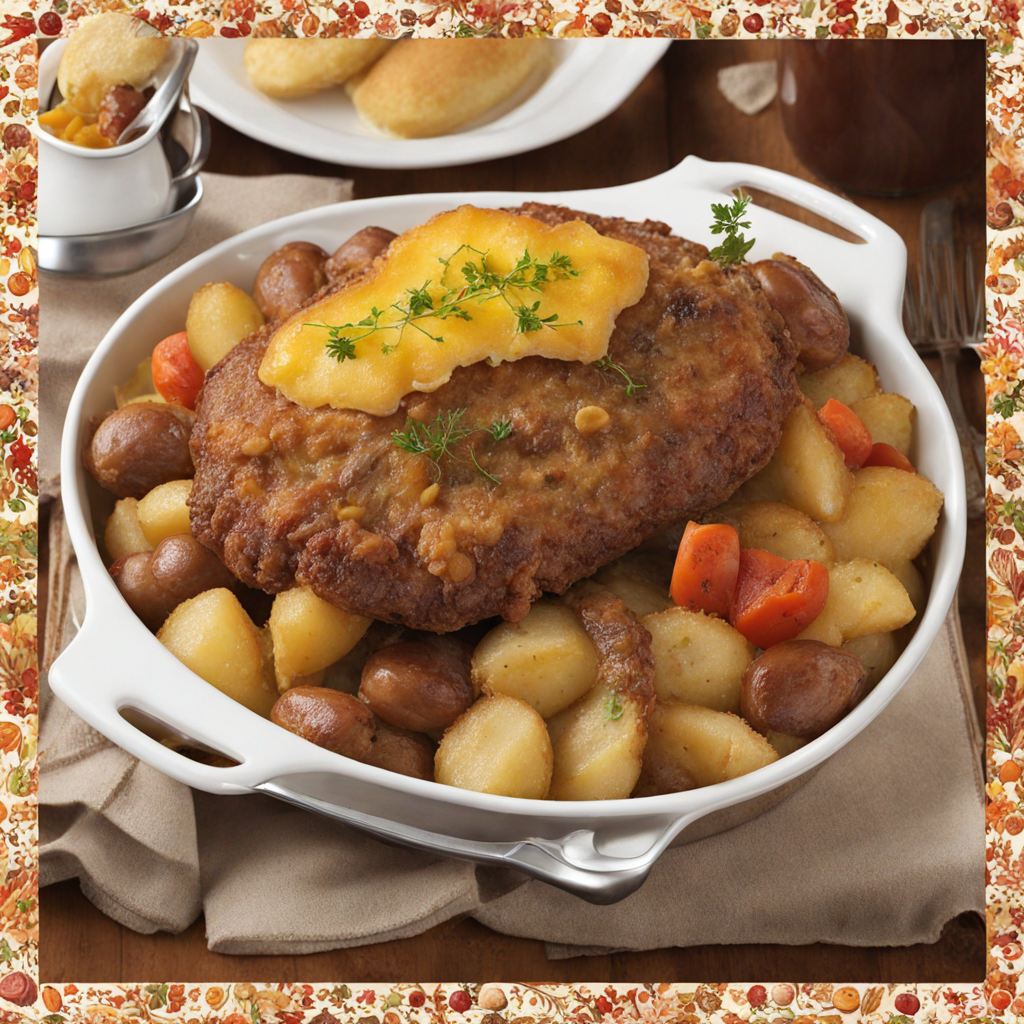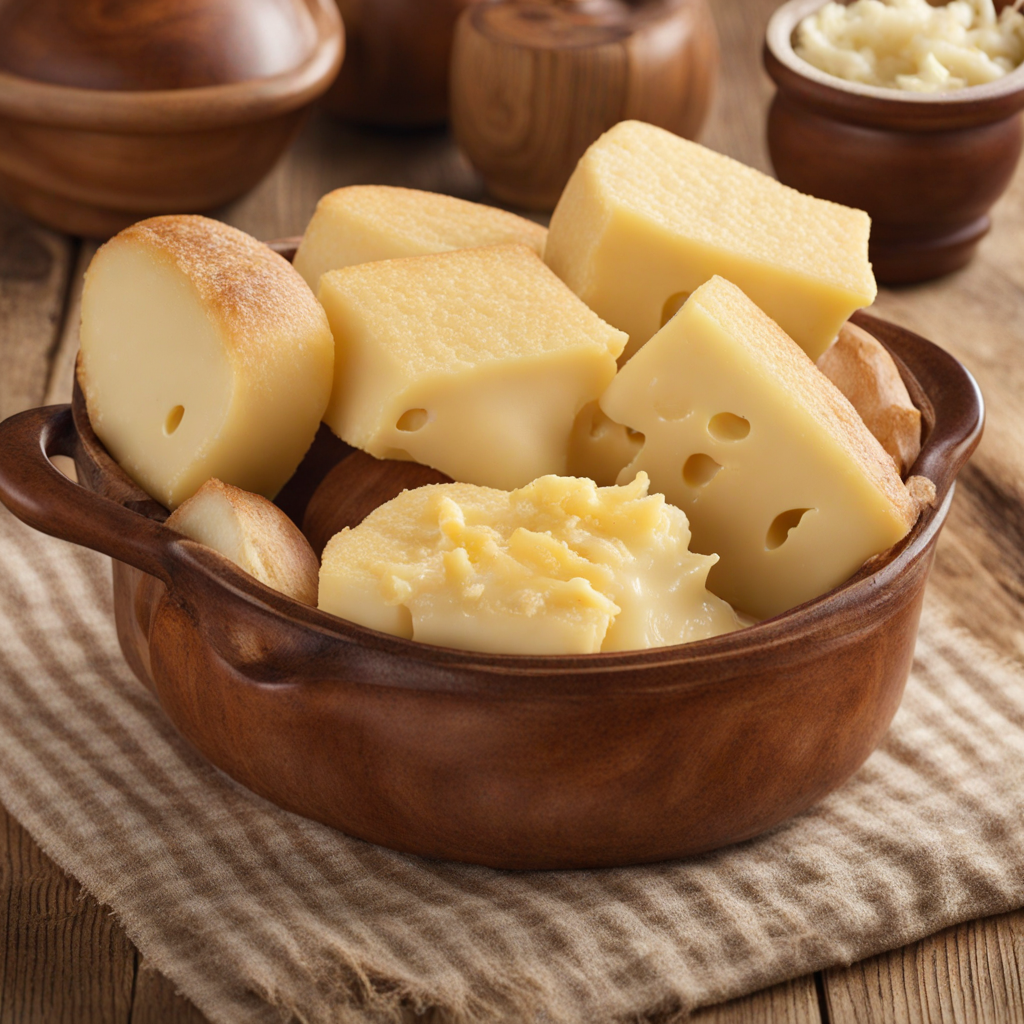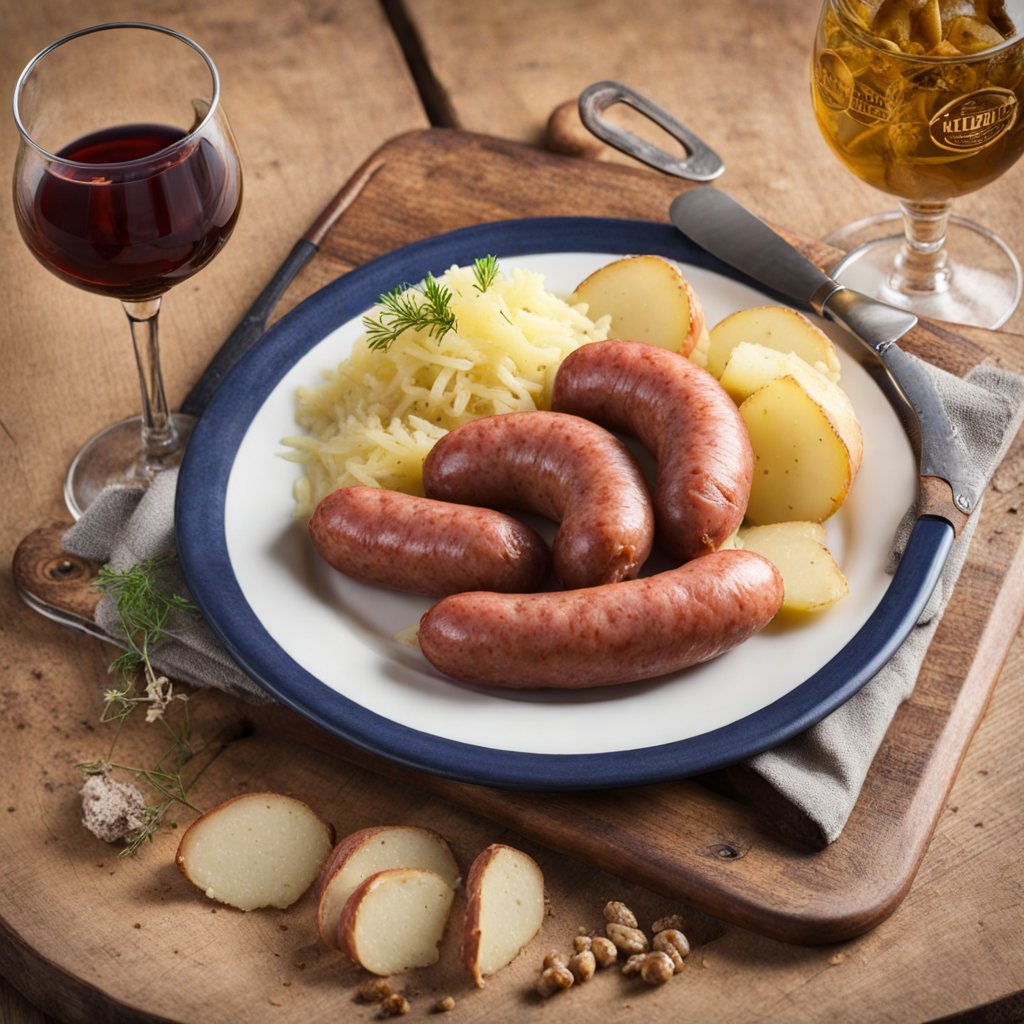Huesenziwwi
Huesenziwwi is a delightful Luxembourgish dish that captures the essence of the country's rich culinary heritage. This unique food is primarily made from locally sourced ingredients, including tender chunks of meat, often pork or beef, which are slow-cooked to perfection. Infused with a blend of aromatic herbs and spices, the meat becomes incredibly tender and flavorful, allowing the natural juices to meld with the accompanying ingredients. The dish is typically served with a side of creamy mashed potatoes or hearty bread, making it a comforting meal that warms the soul. What sets Huesenziwwi apart is its vibrant sauce, which is a secret family recipe passed down through generations. This sauce, rich in flavor, combines a hint of sweet and savory elements, often featuring onions, garlic, and a splash of local white wine. The sauce is poured generously over the meat, creating a beautiful harmony of flavors that tantalizes the palate. Each bite reveals layers of taste, from the robust meat to the luscious sauce, complemented by the earthiness of the potatoes or the rustic charm of the bread. For those looking to explore new tastes, Huesenziwwi offers a delightful journey into the heart of Luxembourg’s gastronomy. The dish is not only a feast for the senses but also a testament to the country’s tradition of cooking with care and passion. Whether enjoyed at a local bistro or made at home, Huesenziwwi promises a unique and satisfying experience that leaves a lasting impression and invites diners to savor the authentic flavors of Luxembourg.
How It Became This Dish
Huesenziwwi: A Culinary Gem of Luxembourg Nestled in the heart of Europe, Luxembourg is a small yet culturally rich country that boasts a unique culinary heritage. Among its many traditional dishes, Huesenziwwi stands out as a beloved staple, embodying the essence of Luxembourgish comfort food. This dish, a hearty stew made with various meats, vegetables, and spices, has a rich history that reflects the country’s agricultural practices, cultural exchanges, and societal changes over the centuries. Origins of Huesenziwwi The name "Huesenziwwi" derives from the Luxembourgish words "Hues" meaning "rabbit" and "Ziwwe" meaning "stew." While rabbit is the traditional main ingredient, the dish has evolved over time and often includes other meats such as pork, beef, or even game, depending on availability and regional preferences. The origins of Huesenziwwi can be traced back to the rural communities of Luxembourg, where farming and hunting were integral parts of daily life. Rabbits were commonly raised for their meat, and their availability made them a popular choice for meals. The stew itself likely developed as a way to utilize leftover meats, combining them with seasonal vegetables and herbs to create a nourishing dish that could feed a family. Huesenziwwi is often associated with the autumn and winter months when hearty meals are particularly valued. The cooler weather calls for warming, substantial fare, and Huesenziwwi fits the bill perfectly. Traditionally, it was a dish prepared for special family gatherings, celebrations, and festive occasions, serving as a reminder of the importance of community and togetherness in Luxembourgish culture. Cultural Significance Huesenziwwi is more than just a dish; it is a cultural symbol that represents the values and traditions of Luxembourg. The preparation of the stew often involves family members gathering in the kitchen, sharing stories and laughter as they chop vegetables and season the meat. This communal aspect of cooking reflects the importance of family ties in Luxembourgish society, where meals are often seen as an opportunity to connect and bond with one another. Moreover, Huesenziwwi embodies the agricultural roots of the country. Luxembourg has a long history of farming, with fertile lands that produce a variety of crops and livestock. The dish utilizes locally sourced ingredients, showcasing the region's rich agricultural heritage. This connection to the land is celebrated in Luxembourg, where there is a strong emphasis on sustainability and supporting local farmers. In recent years, Huesenziwwi has also come to symbolize the culinary diversity of Luxembourg. As the country has become increasingly multicultural, the influence of various immigrant communities has enriched the local cuisine. While traditional recipes remain cherished, new interpretations of Huesenziwwi have emerged, incorporating flavors and techniques from different cultures. This evolution reflects Luxembourg's identity as a melting pot of traditions, making Huesenziwwi a dish that resonates with both history and modernity. Development Over Time The evolution of Huesenziwwi can be traced through various historical periods in Luxembourg. In the Middle Ages, the dish would have been quite simple, primarily featuring rabbit and root vegetables. As trade routes expanded and Luxembourg's economy began to grow, spices and other ingredients became more accessible. This influx of new flavors allowed for the seasoning of the stew to become more complex, reflecting the changing tastes and preferences of the population. The Industrial Revolution in the 19th century brought about significant changes in Luxembourg, as urbanization led to alterations in dietary habits. Many rural families moved to cities for work, where the availability of fresh ingredients was limited. During this time, Huesenziwwi adapted to the changing landscape, with city dwellers often using preserved meats and canned vegetables in their stews. This adaptation highlights the resilience of traditional recipes, as they evolve to suit the realities of modern life while still retaining their core identity. In the 20th century, particularly after World War II, Luxembourg experienced a period of rapid economic growth and modernization. With this came a renewed interest in traditional foods as part of a broader movement to preserve cultural heritage. Chefs and home cooks alike began to revisit classic recipes, including Huesenziwwi, often experimenting with innovative cooking methods and presentations. This revival not only aimed to honor the past but also sought to elevate Luxembourgish cuisine on the international stage. Today, Huesenziwwi is celebrated at local festivals and food markets throughout Luxembourg, where visitors can savor the dish in its various forms. Food festivals often showcase the dish alongside other traditional Luxembourgish specialties, such as Judd mat Gaardebounen (smoked pork with broad beans) and Gromperekichelcher (potato fritters). The resurgence of interest in local food culture has also led to the establishment of restaurants that focus on traditional Luxembourgish cuisine, where Huesenziwwi is a featured item on the menu. Conclusion Huesenziwwi is more than just a hearty stew; it is a reflection of Luxembourg's rich history, cultural significance, and evolving culinary landscape. From its origins in rural kitchens to its place on modern restaurant menus, the dish has adapted to the changing needs and tastes of the Luxembourgish people. As it continues to be passed down through generations, Huesenziwwi remains a symbol of family, tradition, and the enduring connection to the land. In a world that often prioritizes speed and convenience, the preparation of Huesenziwwi serves as a reminder of the value of taking time to create nourishing meals that bring people together. Whether enjoyed at a festive gathering or a cozy family dinner, Huesenziwwi holds a special place in the hearts of Luxembourgers, embodying the essence of their culinary heritage and the spirit of togetherness that defines their culture.
You may like
Discover local flavors from Luxembourg


